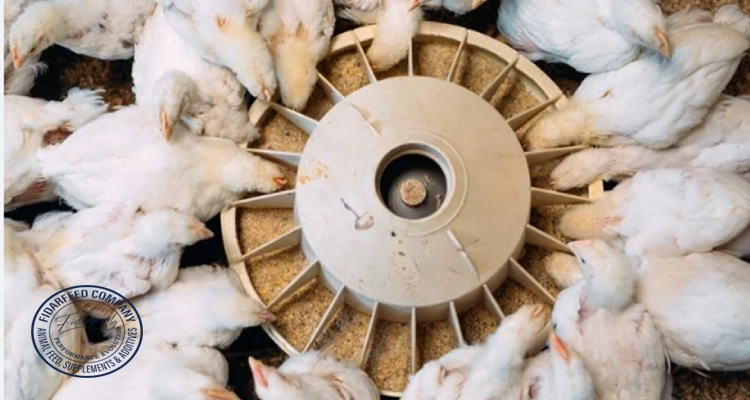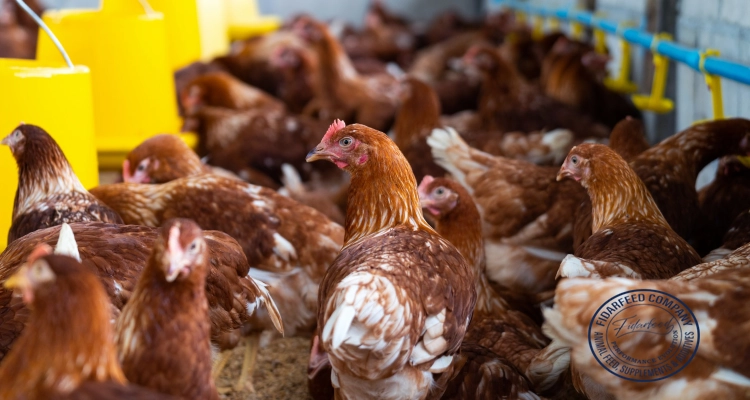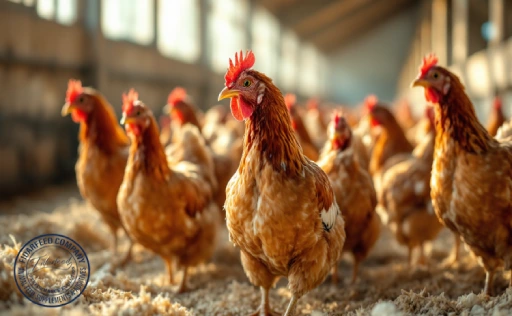
Cobb 500 vs. Ross 308 performance is a topic that frequently sparks discussion among broiler breeders and feed industry stakeholders. Choosing the right broiler strain isn’t just about preference—it deeply influences your flock’s productivity, profitability, and overall success. If you’re involved in broiler production, whether you’re just starting out or a seasoned breeder, understanding how these two strains compare can help you make smarter decisions. Let’s explore their differences and strengths so you can optimize your operation with confidence.
Cobb 500 vs. Ross 308 Performance: Why Choosing the Right Broiler Strain Matters
Selecting the correct broiler strain is a cornerstone of successful poultry farming. Your choice impacts everything—from growth speed and feed costs to disease resistance and final meat quality. For broiler breeders, this decision can mean the difference between meeting market demands or facing costly setbacks.
Learn more about: Active Probiotic Yeast for Poultry
Both Cobb 500 and Ross 308 have earned their reputation globally for their high performance. Yet, subtle distinctions exist that affect how they perform under various conditions. Considering these factors helps breeders align their goals—whether that’s faster turnover, leaner meat, or improved flock health—with the strain best suited to deliver those outcomes.

Growth Rates and Feed Efficiency: How Cobb 500 and Ross 308 Stack Up
One of the most critical performance metrics for any broiler strain is growth rate. Fast growth means quicker market readiness, which translates into improved profitability. Both Cobb 500 and Ross 308 strains are known for impressive growth, but differences can influence your feed strategy.
Studies show that Cobb 500 typically reaches market weight slightly faster, averaging around 38 to 42 days under optimal conditions. Ross 308, on the other hand, often demonstrates exceptional feed conversion ratios (FCR), meaning it efficiently converts feed into body mass, sometimes surpassing Cobb in feed efficiency. For example, in controlled trials, Ross 308’s FCR hovered near 1.5, while Cobb 500 was just a bit higher.
Learn more about: Cobb 500 Broiler Manual: Your Complete Guide to Profitable Poultry Farming
Why does this matter? Feed represents a significant portion of broiler production costs. A lower FCR can mean substantial savings and less environmental waste. However, faster growth may help shorten production cycles, which can also boost turnover and revenue.
Meat Yield and Quality: Cobb 500 vs. Ross 308 Compared
When it comes to meat yield, breeders want to maximize the proportion of usable, high-quality carcass to meet consumer demand. Both strains offer strong yields but with slightly different emphases.
Cobb 500 tends to produce a higher breast meat yield, prized for its lean, tender quality. This trait is especially important where breast fillets command premium prices. Ross 308, while competitive in breast yield, often shines in overall carcass uniformity, providing a balanced ratio of white to dark meat, which can appeal to diverse markets.
For breeders focusing on specific product lines, understanding these subtle differences can shape marketing and sales strategies. For example, a hatchery aiming for high-value breast meat production might favor Cobb 500, while one targeting broader cuts could lean towards Ross 308.

Health and Robustness: Evaluating Disease Resistance and Survival Rates
A strain’s ability to resist disease and survive under farming stresses is crucial. Both Cobb 500 and Ross 308 have been bred for robustness, but their responses to health challenges can vary depending on management and environment.
Learn more about: Ross 308 vs. Cobb 500: Which Broiler Breed is Right for You?
Ross 308 is often praised for its strong immune response and resilience to common diseases, which may translate to lower mortality rates in less-than-ideal conditions. Cobb 500 also shows good health profiles but sometimes requires more meticulous management to maintain peak condition.
For breeders facing challenges such as high stocking densities or regional disease pressures, knowing how each strain responds can inform decisions about vaccination programs, biosecurity measures, and overall flock management.
Environmental Adaptability: Which Strain Performs Better in Your Region?
Climate and housing conditions have a significant impact on broiler performance. Both strains were developed with adaptability in mind, but regional differences in temperature, humidity, and ventilation can affect outcomes.
Cobb 500 often adapts well to a broad range of climates but prefers stable, controlled environments to perform at its best. Ross 308 may have a slight edge in tolerance to variable or hotter conditions, making it suitable for areas with fluctuating weather.
Learn more about: Cobb Chicken Breeds: An Overview
Feed industry stakeholders and breeders must consider how local conditions influence bird comfort, feed intake, and stress levels. Proper environmental management aligned with strain characteristics can improve growth and reduce losses.

Practical Tips for Breeders: Maximizing Cobb 500 and Ross 308 Performance
Regardless of the strain, success comes down to management. Here are some proven tips:
-
Optimize Nutrition: Tailor feed supplements and concentrate mixes to the strain’s growth phase, focusing on energy, protein balance, and micronutrients.
-
Monitor Environment: Maintain temperature, ventilation, and litter quality within ideal ranges to reduce stress and disease risk.
Learn more about: Cobb 500: The Broiler Breeder’s First Choice – Unveiled
-
Health Management: Implement routine vaccinations and biosecurity practices. Adjust these based on the strain’s known vulnerabilities.
-
Data Tracking: Record growth rates, feed intake, and mortality daily. Use this data to tweak management and nutrition promptly.
Breeders who combine strain knowledge with sound husbandry practices usually see the best results.
Cost Considerations: Balancing Investment and Returns with Cobb 500 vs. Ross 308
Cost management is a constant challenge in broiler production. While both Cobb 500 and Ross 308 demand similar investments in feed and care, their slight differences in feed conversion and growth rates affect overall profitability.
Learn more about: Guide to Choosing the Best Broiler Breed: Cobb 700 vs Cobb 500
Feed accounts for up to 70% of production expenses. A strain with better feed efficiency like Ross 308 may reduce this cost. However, faster growth of Cobb 500 can lower housing time and labor expenses. Additionally, health management costs might differ if one strain requires more intensive care.
Understanding these economic trade-offs helps breeders align expenses with expected returns, ensuring sustainable operations.

Final Verdict: Which Broiler Strain Fits Your Breeding Goals?
Choosing between Cobb 500 and Ross 308 isn’t about finding a “one size fits all” solution. Instead, it’s about matching your unique goals, resources, and conditions with the strain that best complements them.
-
If rapid growth and higher breast meat yield are priorities, Cobb 500 stands out.
-
If feed efficiency, disease resilience, and environmental adaptability are more critical, Ross 308 may be your best bet.
By evaluating your operational needs and local conditions alongside these performance metrics, you can make an informed choice that drives your success.
Conclusion
Understanding the Cobb 500 vs. Ross 308 performance differences empowers breeders and feed industry professionals to optimize their production strategies effectively. Each strain offers unique advantages, and knowing how to leverage these strengths can boost productivity, reduce costs, and improve flock health.
We invite you to share your experiences with these broiler strains in the comments below. What has worked best for your operation? Do you have specific challenges or insights to add? Your input enriches this conversation and helps the entire community grow smarter and more successful together.



